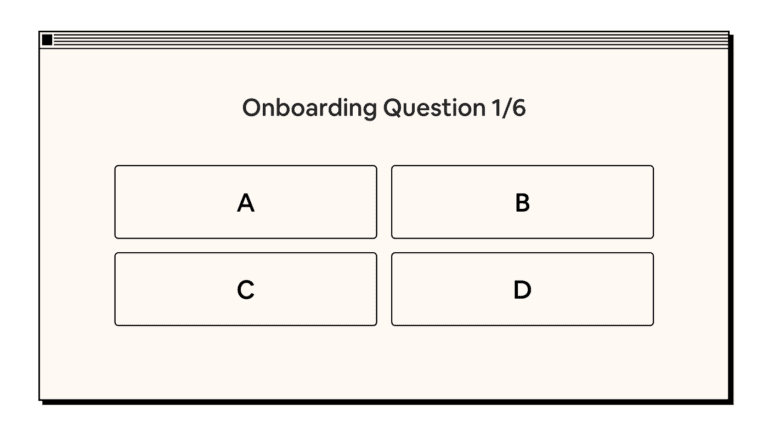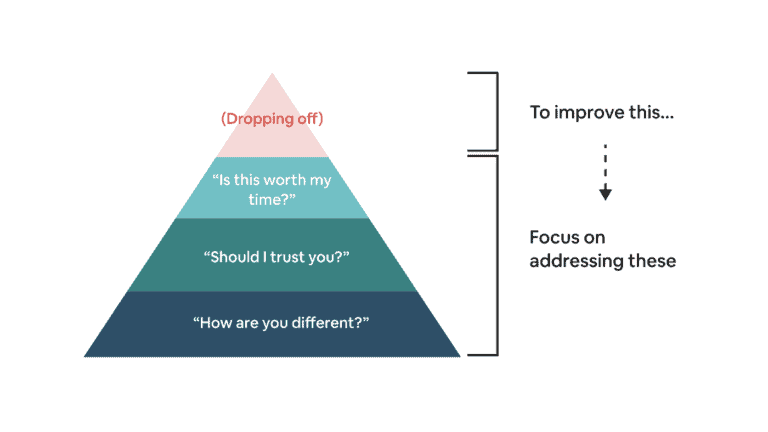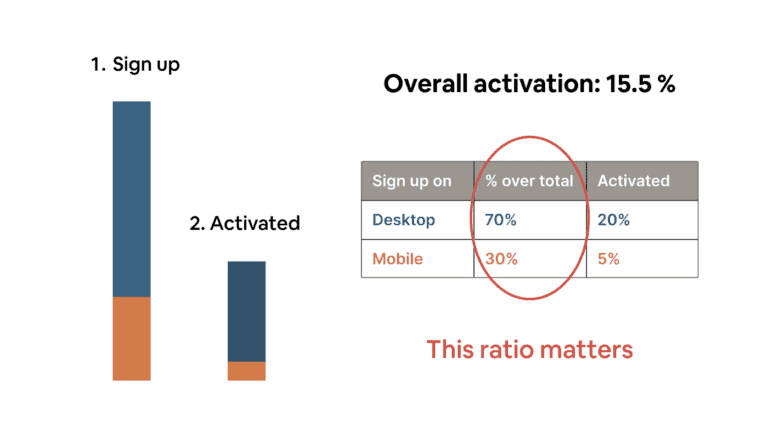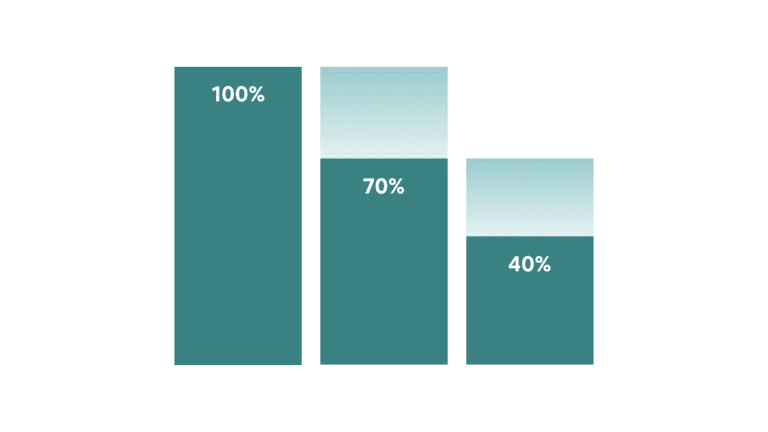If you’ve been part of a product or growth team that works on activation, you must have heard of this idea at one point:
“Let’s remove onboarding questions!”
At a glance, it makes sense:
- You are asking a bunch of questions before showing value.
- Fewer steps = less friction.
But then why does every SaaS product still ask them?

The answer is actually quite simple. Because by removing them, you will lose more than you gain:
- The data provides strategic value by helping you refine your ICP & anti-personas.
- Different users activate differently. You won’t get to personalize the onboarding journey if you don’t have the data to base it on.
- The data acts as a proxy to measure your acquisition quality. Who you bring into the house is just as important as what you do after they come in. If most of your signups have low intent or low quality, nothing you do inside the product will help much. Or worse, you might end up making changes to please the wrong crowd while hurting the experience of your ICP.
Sure, you can gather some data programmatically, but the most critical, context-specific data will have to rely on self-reported answers.
Example: Marketing attribution software is losing its accuracy due to GDPR, the death of 3rd-party cookies, and the evolving software-buying behavior (aka “Dark Funnel”). A simple “How did you find us?” is often more reliable than an expensive and convoluted tracking setup.
Also, since onboarding questions exist in virtually every SaaS product, a user who drops off during this flow likely has extremely low intent. Even if you remove the flow entirely, they’ll simply drop off at the next step. I’ve tested this across six different products, and I got the same result every single time.
However, this does not mean…
- You can ask a gazillion of questions. Be reasonable and don’t ask for things you can get programmatically (e.g. locale, device) or from 3rd-party enrichment services (e.g. Clearbit).
- You don’t care about optimizing the conversion rate of this flow at all. In my experience, a 90%-95% conversion rate is what you should aim for.
An alternative approach I have seen is to trigger onboarding questions in the second session or later. While this could be a valid option, keep in mind that…
- Most people who sign up for a SaaS product do not return after the first session. By asking these questions only those who do, the data will have a strong sampling bias.
- The user experience is not necessarily better. In fact, many users prefer getting over this hurdle upfront, rather than having their flows interrupted later on.
For these reasons, I don’t recommend reinventing the wheel. Instead, focus on using the answers you get to improve the experience that comes afterward. A good way to think about this is using the “Psych Framework” created by Darius Contractor. In a nutshell, you want to maintain the “Psych-level” of users by balancing giving and capturing value.
Remember, activation is not simple addition and subtraction. A tactic might improve a secondary metric but introduce negative effects down the road. You always have to consider the entire system.




